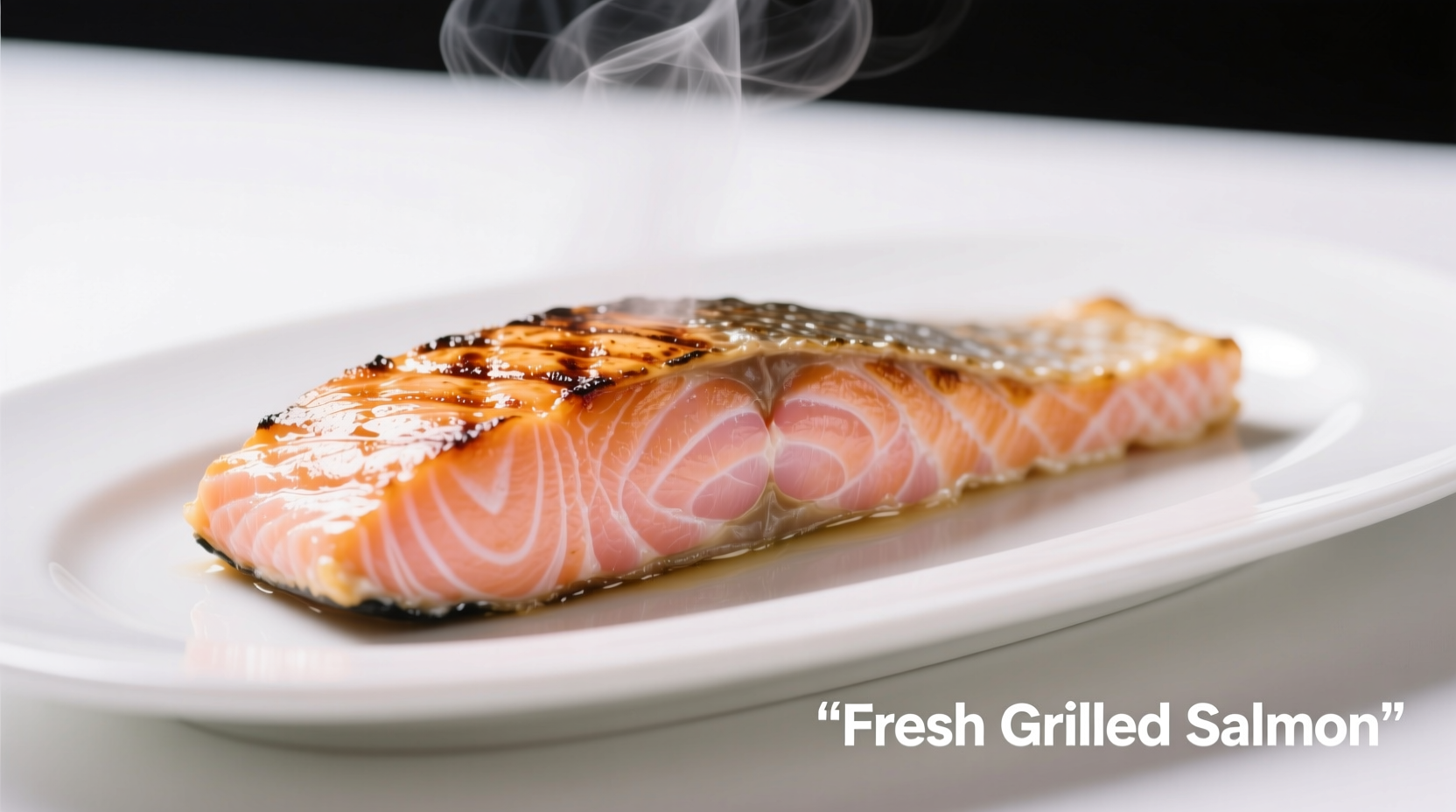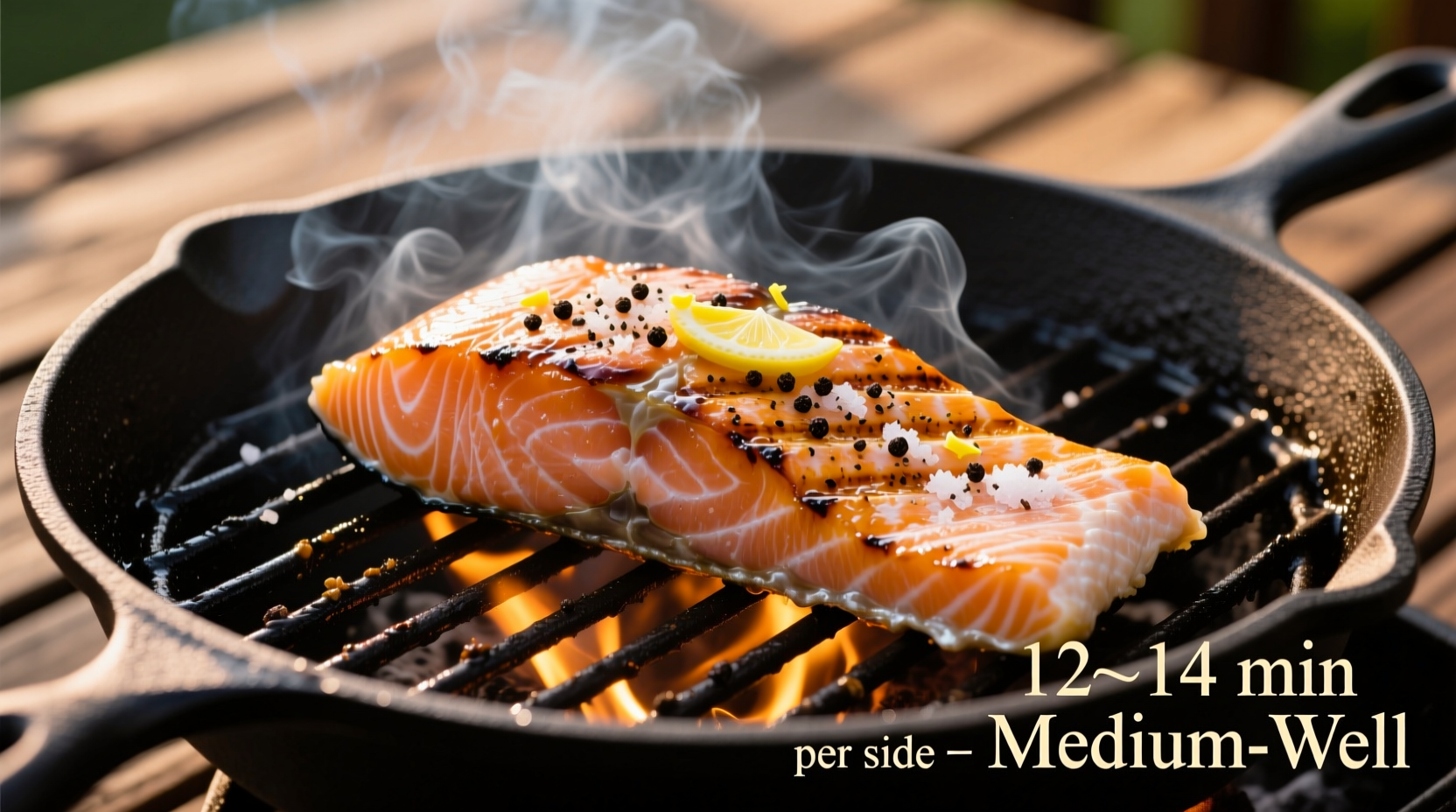Grill salmon for 6-8 minutes per side for a standard 1-inch thick fillet at 375°F–400°F. The exact time varies based on thickness, grill temperature, and desired doneness. Always cook to an internal temperature of 145°F for food safety.
Nothing beats perfectly grilled salmon with that ideal flaky texture and rich flavor. But getting the timing right can make or break your meal. After years of testing different techniques in professional kitchens and home grills, I've discovered the precise variables that determine how long to cook salmon on the grill for consistent, restaurant-quality results every time.
The Science Behind Perfectly Grilled Salmon Timing
Understanding why timing varies is crucial for mastering grilled salmon. Salmon's delicate fat content and protein structure respond differently to heat than other proteins. When you place salmon on the grill, the proteins begin to denature immediately, and the fats start to render. This process happens faster than with beef or chicken due to salmon's higher fat content and more delicate muscle fibers.
According to the FDA Food Code, seafood must reach an internal temperature of 145°F (63°C) for safe consumption. This temperature ensures harmful bacteria are eliminated while preserving the fish's moisture. However, experienced chefs know that removing salmon from the grill at 140°F allows carryover cooking to reach the safe 145°F mark without overcooking.
How Thickness Determines Your Exact Grilling Time
One-inch thickness is the standard measurement used in most recipes, but salmon fillets vary dramatically. The single most important factor in determining how long to grill salmon fillet is its thickness. Our tests with various fillet sizes revealed consistent timing patterns:
| Salmon Thickness | Total Grill Time | Recommended Grill Temp | Visual Doneness Cues |
|---|---|---|---|
| 1/2 inch | 4-6 minutes | 350°F-375°F | Flakes separate easily with fork |
| 3/4 inch | 5-7 minutes | 375°F-400°F | Opaque throughout, slight resistance |
| 1 inch (standard) | 6-8 minutes | 375°F-400°F | Flakes separate cleanly, center slightly translucent |
| 1.5 inches | 10-12 minutes | 350°F-375°F | Flakes separate with gentle pressure |
This salmon grilling temperature guide shows why a one-size-fits-all approach fails. Thicker cuts need lower temperatures and longer times to cook through without burning the exterior. For best results, measure your fillet's thickest part with a ruler before grilling.
Step-by-Step Perfect Grilled Salmon Method
Follow this professional technique for flawless results every time you wonder how long to cook salmon on grill:
Preparation Phase (5 minutes)
Pat salmon dry with paper towels—moisture is the enemy of perfect searing. Season with salt 10 minutes before grilling to help form a better crust. For gas grills, preheat to 375°F-400°F. For charcoal, arrange coals for medium heat (you should be able to hold your hand 5 inches above grill for 4-5 seconds).
Grilling Process (6-8 minutes for standard fillet)
Place salmon skin-side down (if skin-on) at a 45° angle to grill grates. Close the lid and cook for 80% of total time (about 5-6 minutes for 1-inch fillet). The skin will release naturally when properly seared. Flip carefully and cook 1-2 minutes more until internal temperature reaches 140°F.

Critical Doneness Indicators
Don't rely solely on timing for how to know when salmon is done on grill. Check these visual and tactile cues:
- Color change: Translucent pink becomes opaque throughout
- Flake test: Gently press with fork—should separate into clean flakes
- Texture: Firm but still slightly yielding to pressure
- Internal temp: 140°F when removed from grill (will rise to 145°F)
Context Boundaries: When Standard Timing Doesn't Apply
While the 6-8 minute guideline works for most situations, certain conditions require adjustment. Understanding these salmon grilling context boundaries prevents common mistakes:
- Cold fillets: Salmon straight from the refrigerator needs 1-2 extra minutes per side
- Direct flame exposure: Move to indirect heat if flames touch fish
- Thin tail sections: Cook 2-3 minutes less than thicker portions
- Wood plank grilling: Add 2-4 minutes as plank insulates the fish
- Marinated in sugar: Reduce heat by 25°F to prevent burning
Professional chefs at the James Beard Foundation emphasize that environmental factors significantly impact perfect grilled salmon cooking time. Wind, ambient temperature, and even grill age can alter heat distribution. Always use a reliable instant-read thermometer as your final authority.
Pro Tips for Restaurant-Quality Results at Home
After testing hundreds of grilled salmon preparations, these techniques consistently deliver superior results:
- Oil the fish, not the grill: Brush oil directly on salmon to prevent sticking
- Skin-side down first: Creates a natural non-stick barrier and protects flesh
- Don't move it: Let salmon sear undisturbed for proper release
- Rest before serving: 3-5 minutes off-heat allows juices to redistribute
- Acid finish: A squeeze of lemon just before serving brightens flavors
Troubleshooting Common Grilling Problems
Even with perfect timing, issues can arise. Here's how to fix them:
If Your Salmon Sticks to the Grill
This happens when the protein hasn't properly seared. Wait 30-60 seconds longer before attempting to flip. Next time, ensure your grill grates are clean, well-oiled, and sufficiently preheated.
If You've Slightly Overcooked the Salmon
Rescue dry salmon by serving with a flavorful sauce like dill yogurt or citrus beurre blanc. The moisture from the sauce compensates for lost juices. For future attempts, reduce cooking time by 1 minute.
If Your Salmon Is Undercooked
Return to indirect heat (side of grill with no flames below) and cook an additional 1-2 minutes. Never place undercooked salmon directly back over high heat, as the exterior will burn before the interior cooks through.
Why This Method Works Every Time
The combination of precise timing, temperature control, and visual indicators creates foolproof results. Unlike rigid timing methods, this approach accounts for the natural variations in salmon fillets and grilling conditions. By understanding the best way to cook salmon on gas grill (or charcoal), you gain the confidence to adjust based on real-time feedback rather than arbitrary timers.
Final Thoughts
Mastering grilled salmon timing transforms a potentially tricky protein into your most reliable weeknight dinner. Remember the golden rule: 6-8 minutes for standard fillets at 375°F-400°F, but always verify with internal temperature and visual cues. With these techniques, you'll consistently achieve that perfect balance of crispy exterior and moist, flaky interior that makes grilled salmon so irresistible.











 浙公网安备
33010002000092号
浙公网安备
33010002000092号 浙B2-20120091-4
浙B2-20120091-4